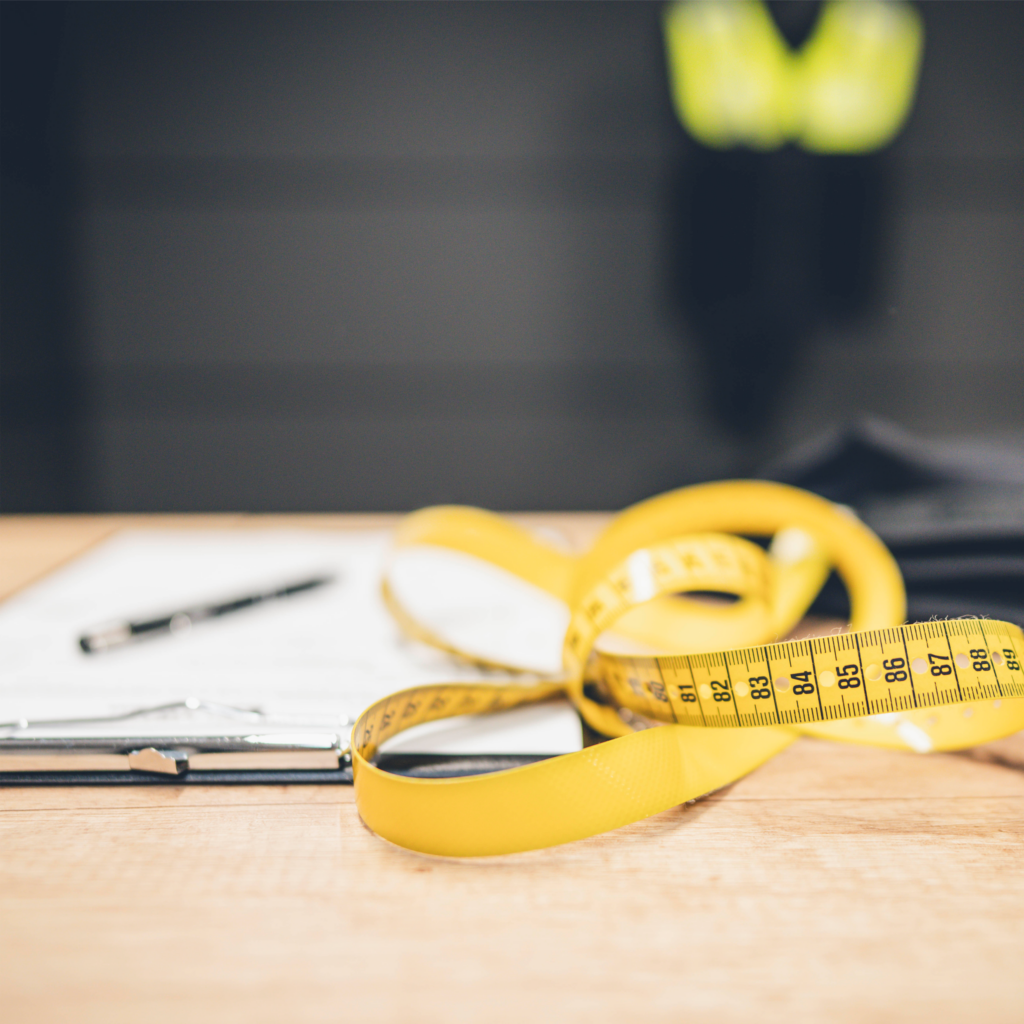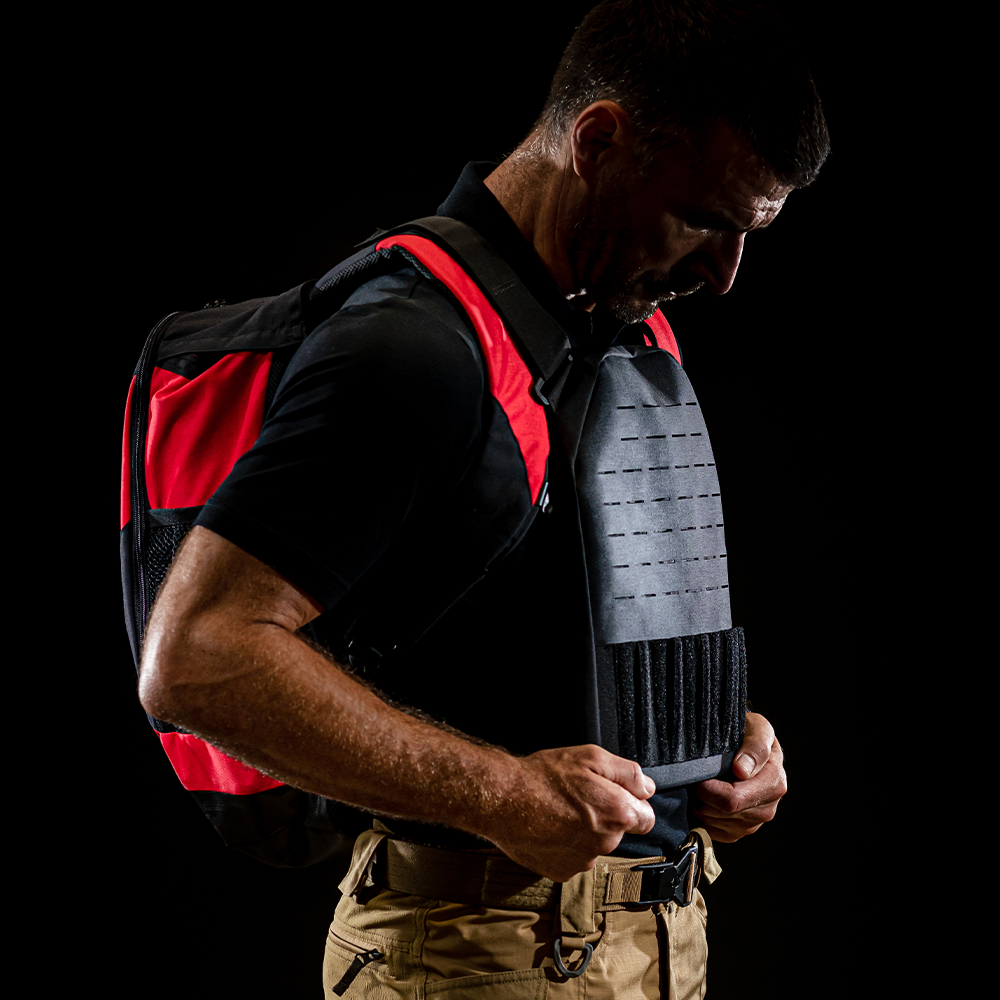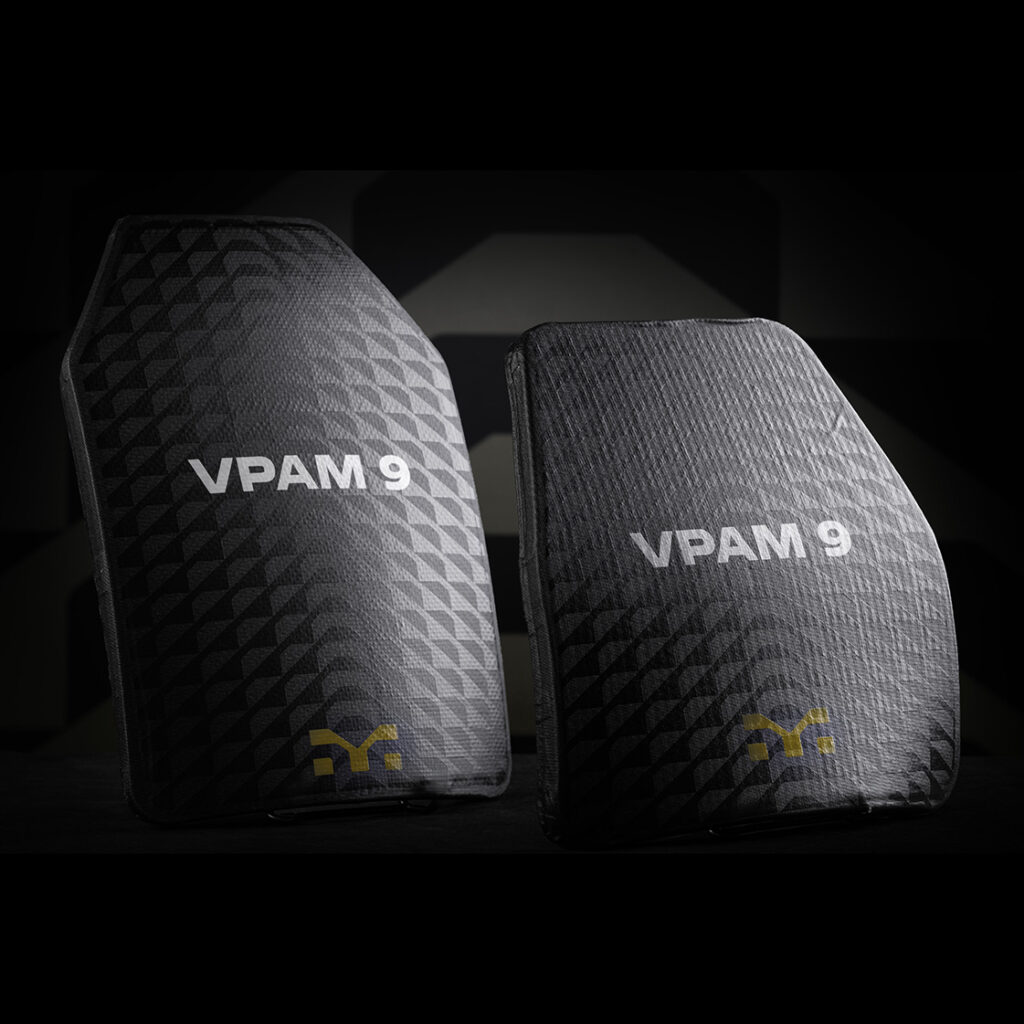
The ultimative guide to ballistic vests
Let’s face it: life is always life-threatening. Nevertheless, for some people in certain professions, the threat to life is exceptionally high. Police and military personnel are among those who routinely encounter special dangers. Accordingly, they need an extra class of protection—especially for those times when danger is at its greatest and high-level protection counts the most.
The type of extra-class protection police and military personnel need is popularly termed a “bulletproof” vest. However, the correct technical term for it is a “bullet-resistant” or “ballistic“ vest. Ballistic vests are designed to protect on-duty officers from injury and can be distinguished on the basis of several criteria. These are: area of use; region; manufacturer; and ballistic materials used (and thus, the protection requirement, which raises questions for many users and procurers).
In this blog article, we explain ballistic vests and offer an overview of the types commonly available in the marketplace for this type of protective equipment. We also discuss the protection classes available (in context) and describe how to upgrade plate carriers & co. Last but not least, we give recommendations on what to look for when using a ballistic vest and how to take care of it.
In this blog post:
- What is a ballistic vest
- Which types of ballistic vests are available?
- Covert Vests
- Overt vests
- Plate carriers
- Soft ballistics vs. hard ballistics
- What makes a good ballistic vest?
- How much does a ballistic vest weigh?
- What upgrades are available for a ballistic vest?
- Shock absorbers
- Stab-and impact protection
- What protection is provided by ballistic vests?
- Care and maintenance of a ballistic vest
- Summary
What is a ballistic vest
A bullet-resistant or ballistic vest is part of a personal protective-equipment system. It is designed to protect particularly sensitive and especially vital areas of the body from attacks involving weapons of virtually any type that pose a possible threat: these include thrown projectiles (stones, bottles, etc.), stabbing implements, and firearms, among others. Different protection requirements exist for each type of threat that presents itself; also, protection requirements can be combined.
Which types of ballistic vests are available?
Basically, ballistic vests differ according to the manner in which they are worn, the level of protection they provide, the purpose of their use, the gender of the intended user, and the materials employed in their manufacture. As a rule, a protective vest consists of at least two parts: a cover and the ballistics. The cover is used to hold soft and/or hard ballistics, while the ballistics themselves provide the actual protection.
However, a protective vest can also be interpreted as a plate carrier. In this case, for example, the pockets or the high-visibility elements extend the range of applications. Protection can also be extended by adding certain elements, such as a rescue handle.
Various users refer to protective vests as “tools” because they can be used individually and implement-like depending on the operational scenario. Such user groups include the police, military, and special forces.
Protective vests can also be differentiated by the way they are worn. A basic distinction is made between protective vests to be worn concealed (also called covert vests) and vests to be worn openly (also called overt vests or plate carriers).
Covert Vests
Concealed-worn protective vests
Used by police and security officers
Covert vests used by police or security officers are not visible compared to open-worn protective vests. They are worn under the uniform or duty gear to provide discreet protection. As a rule, covert vests tend to be thin and light, thereby providing more flexibility, mobility, and comfort to the user.
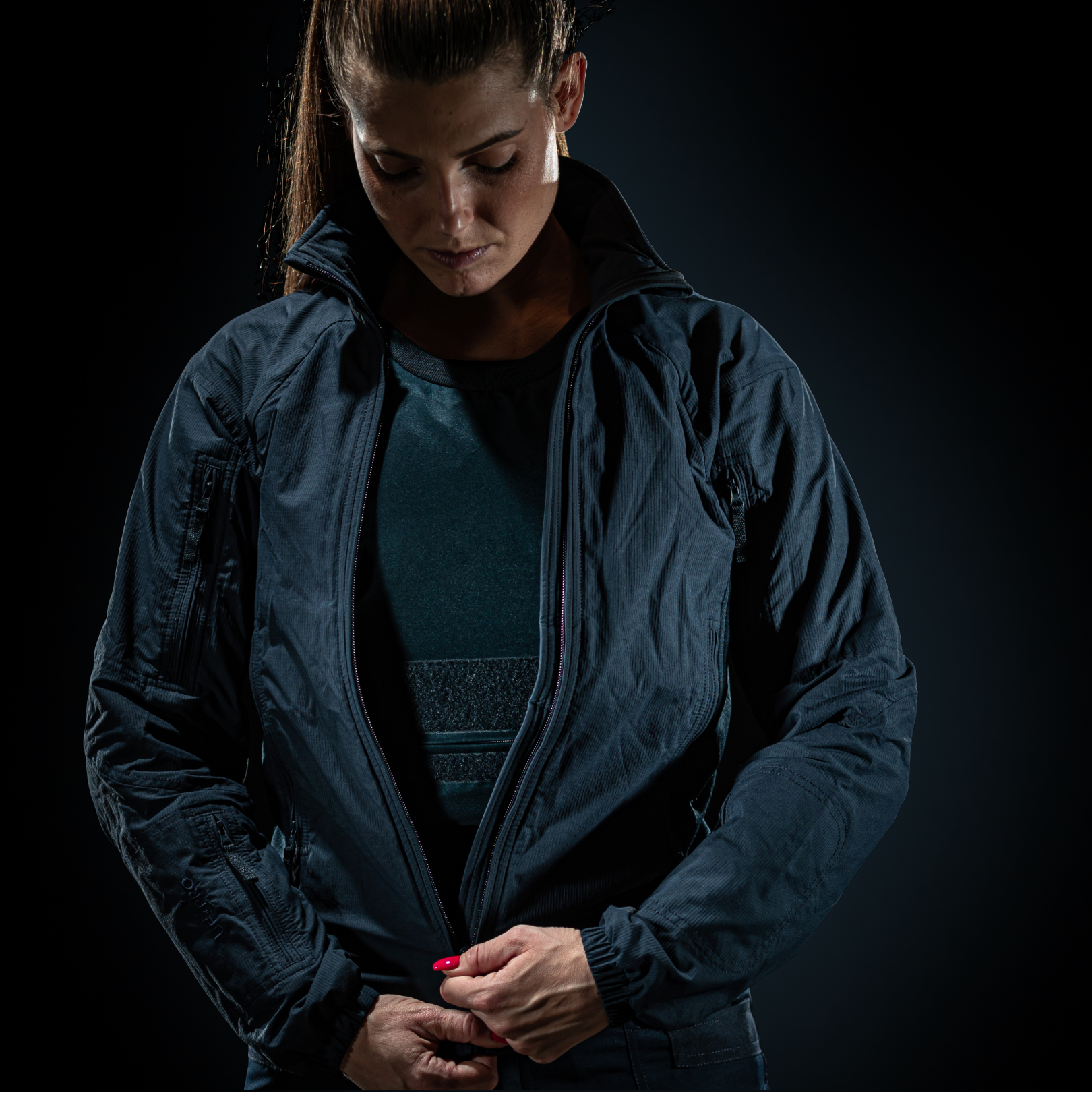
Covert vests are usually manufactured using moisture-absorbing materials to give them greater breathability. The majority of concealed vests offer protection against smaller-calibre firearms ammunition as well as protection against stab attacks. Covert vests made for women are anatomically shaped in front; those made for men have no such special shaping.
Discover our soft ballistic panel specifically designed to fit female bodies.
Overt vests
Open-worn protective vests
Used by police officers
Overt vests are worn openly over the uniform or duty gear. However, a recent trend finds users of classic covert vests wearing them as overt vests.
Overt vests, which are commonly used by security and law-enforcement officers, are usually designed in the “waistcoat style”—that is, in the style of a jacket with a front-operated zipper closure. In terms of ballistic performance, overt vests are identical to that of concealed vests. In only rare cases can covert vests be upgraded with hard ballistics.

Functionality also plays a critical role in the design of an overt vest. For example, the best ones offer the possibility of attaching typical police equipment, including radio pouches, MOLLE/PALS, or high-vis elements.
Used by military and special forces
Because military and special forces personnel are generally placed in situations involving greater life-threatening risks, protective vests in this category feature protective surfaces larger than those of waistcoat-style vests and usually can be upgraded by attaching ballistic panels to areas that include the upper arms, thighs, ribs, throat, abdomen, and shoulders.

Overt vests for this class of users have non-openable fronts and are equipped with an extensive MOLLE system. This type of overt vest is heavier and more rigid, but provides maximum protection against various types of weapons. Also, they are customarily made with flame-retardant materials.
Plate carriers
Used by military and special forces
Overt vests are often equated with plate carriers because these two types of gear so closely resemble one another. Nevertheless, they are different. Plate carriers, for instance, have a smaller protective surface area than do overt vests (although smaller, the level of protection offered by plate carriers is comparably high because users have the option of replacing standard soft ballistics with standalone panels, thereby reducing equipment weight and consequently increasing user-mobility).
Two other distinctive attributes of plate carriers are their modularity and multifunctionality. These important characteristics allow users to upgrade and downgrade their plate carrier with the components needed for the mission of the moment. As well, plate carriers can be equipped (as they often are) with adjustable straps and cummerbund to ensure secure fit and freedom of movement.

Another important aspect is the modularity and multifunctionality of the plate carrier, allowing the user to upgrade and downgrade the system with the components needed for the mission at any time. The secure fit and freedom of movement can be ensured, for example, by adjustable straps and cummerbund.
Soft ballistics vs. hard ballistics
The term “soft ballistics” refers to ballistic inserts that—depending on their size, weight and fit—provide effective protection against various types of fired ammunition.
As a rule, soft ballistics are made of very high-strength, elastic, energy absorbant textiles boasting low elongation at break and high dimensional stability. These yarns are made of para-aramid and high-performance polyethylene, for example, which are capable of stopping in a fraction of a second and within mere centimeters a typical revolver or pistol bullet.
Learn more about para-aramid and high-performance polyethylene in our previous blog article.
When combined with stab-and-impact protection, soft ballistics provide additional protection against knives, needles, and splinters as well as against blows and other types of impacts.
In practice, there are several ways to use soft ballistics. One is known as the “standalone” variant, which requires no addition of hard ballistics. Another (called an “in-conjunction system”) entails placing soft ballistics behind a panel of hard ballistics, the result of which is an increase in the overall level of protection.
Hard ballistics—also known as hard armour or ballistic panels—are used to protect people from rifle fire. Hard ballistics derive their name from the hardened panels of which they are made—these panels can be made of various composite materials such as ceramics, backing material, steel, or high-density plastics.
Hard ballistics can be used in combination with soft ballistics or as a standalone panel in plate carriers for purposes of safely repelling long-gun projectiles (e.g., those fired from assault rifles).
What makes a good ballistic vest?
First and foremost, a good ballistic vest must provide reliable protection against the potential threats as defined by the user and also fully meet the requirements of the respective protection class. Beyond that, a ballistic vest can be deemed good if it provides the wearer an additional margin of safety. These are the basic requirements, but there are a number of other criteria that can be used to assess the quality of a vest.
One of these is what’s often referred to as the “comfort criteria” which takes into consideration the vest’s weight, cut, and degree of movement freedom afforded to the wearer. Each of those considerations carries equal importance because, taken together, they indicate whether the protective vest in question can be worn the entire time the user is on duty without causing bodily strain and producing discomfort.
Unfortunately, the range of protection is usually quite limited if vests are to be judged solely on the basis of comfort criteria. It is therefore important to consider additional criteria.
There is, for example, the shape of the vest. This is crucial for both comfort and safety. Here, the best possible solution must be found for the user’s specific requirements. The larger the vest, the larger the area of the body that will be protected. However, what the wearer gains from the larger size in terms of safety, the wearer loses with regard to freedom of movement and comfort. Therefore and depending on the application, the user must find a compromise between protection and comfort (actually, there is a third factor that must be taken into consideration in the search for a compromise—reasonabless of price).
How long a protective vest can be worn depends on weather conditions along with the wearer’s physical condition, personal attitude toward vests, and accustomisation to this type of equipment.
Depending on the protection class, type of construction, and vest cut, wearers should expect a more or less severe impairment of their freedom of movement whenever they put on this gear. They should understand that donning a protective vest is comparable to wearing any sort of additional heavy garment—the effect is simply unavoidable. However, it can be lessened with good design, optimised cut, and the use of technically optimized ballistic materials (i.e. fabric treatment and layer structure).
How much does a ballistic vest weigh?
Depending on size, design and protection requirements, the weight of a ballistic vest can vary greatly. The medium-sized vest commonly worn by police officers weighs 2-3 kg (protection level 1, Technical Guidelines for Police Protective Vests).
Ballistic vests, such as those worn by army and special forces personnel, usually provide protection against rifle fire but always over a relatively large area of the body. For this reason, they can weigh as much as 15 kg and more (it’s worth remembering, though, that the vest-wearing police officer or soldier will be carrying sometimes more and sometimes less other equipment).
What upgrades are available for a ballistic vest?
Ballistic vests can be upgraded with replacement covers, carrying bags, stab-and-impact protection elements, or additional protectors. Each of these upgrade elements serves to move the vest to a higher protection class.
Shock absorbers
A shock absorber helps reduce blunt trauma and all associated injuries. It consists of materials (e.g., composite panels, plastic sheeting, or metal) that absorb energy quickly and distribute it across a large area. Other materials (e.g., rigid foams and down) may also (or alternatively) provide volume in order to act as a front-body buffer.
Shock absorbers come in various shapes and sizes. The two main types are: partial shock absorbers for the cardiac and spinal areas; and full-fledged shock absorbers. The latter are the same shape and size as ballistic panels.
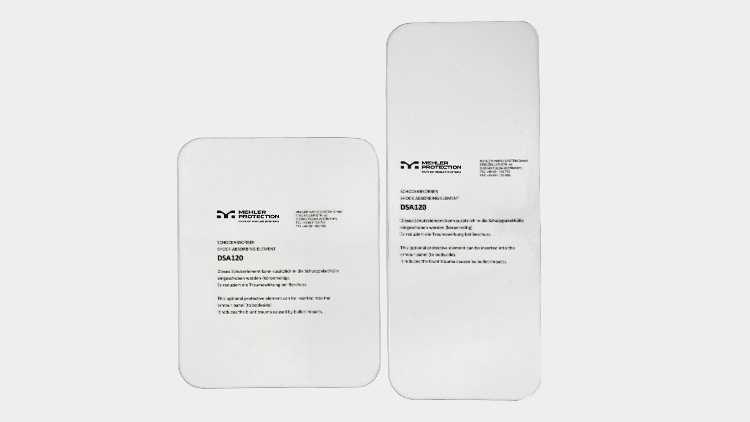
Cardiac and spinal-region shock absorbers are usable with concealed-worn vests. For open-worn vests, there are additionally protectors for the neck, shoulder, upper arm, thigh, and groin. Obtainable as well for many makes and models of overt vests are inserts to permit upgrading to higher protection classes.
Stab-and impact protection
Effective protection against stabbing weapons, blows, and impacts
Today, it is possible to procure stab-protection inserts of many different types, each with its own set of performance properties. Inserts made of materials such as sheet steel, titanium foil, or segmented metal panels are rather inflexible and for that reason are now roundly disfavoured by informed users.

Specially treated and constructed steel-track armour offers better flexibility and is therefore preferred by modern police units. Also possible are solutions based on specially coated or laminated aramid fabric—these are particularly desirable for inseparably combining ballistic and stab protections (and for providing very good protection against spikes, needles, sharpened bicycle spokes, and other hard, pointed-tip items that can be employed as weapons).
A purely textile ballistic vest (one that is not made with hard ballistics) can withstand stabbing attacks, but only to a limited extent. Although ballistic vests protect very well against slash and cut injuries, protection may be inadequate for true stab injuries.
In this case, special measures are required: Mehler Systems supplies separate stab-protection inserts for all vest types. These stab-protection inserts fit in front of the ballistic panels and can be adapted to the shape of each type of vest. As a rule, these inserts are only fully effective in combination with a ballistic panel.
What protection is provided by ballistic vests?
The amount of protection provided by any particular vest is reflected by its protection-level rating. These levels are defined according to universally recognised standards made up of well-established testing requirements that take into account such things as trauma and ammunition types.
The most common levels of protection for ballistic vests are set forth by the U.S. standards NIJ 0101.04 and 0101.06, the British standard CAST, the European standard VPAM, and the German Police Technical Guideline for Protective Vests (also known as SK).
Care and maintenance of a ballistic vest
Ballistic vests are designed for tough use. Nevertheless, they can be damaged—and, unfortunately, even seemingly minor damage can lead to a reduction of protective performance. Therefore, vests must be examined at regular intervals (ideally, after each use) for tears and cuts.
However, tears and cuts are not the only conditions that can adversely affect ballistic performance. Also of concern are moisture, sweat, heat, and UV radiation. This is why ballistic panels are sealed in waterproof, UV-resistant sleeves. Because of this, ballistic panels should never be laundered in conventional washing machines and dryers. Likewise, harsh chemical cleaning agents should be avoided.
The cover, however, can be machine washed since the fabric does not directly affect the ballistic protection provided by the panel. Be sure to separate the cover from the panel before washing. Also, be sure that only the cover is washed. Washing by hand rather than in a machine will help extend the life of the cover. When possible, clean the cover by wiping it down rather than washing it.
Summary
“Ballistic vests” vary in the way they are worn, they vary with regard to the level of protection they provide. They have different intended uses. As well, ballistic vests are tailored to the individual wearer’s gender and are made from a variety of materials. Depending on the intended use, ballistic vests can be upgraded with soft or hard ballistics or a combination of the two to increase the level of protection and as a result make the wearer’s life in the field a lot less dangerous.
